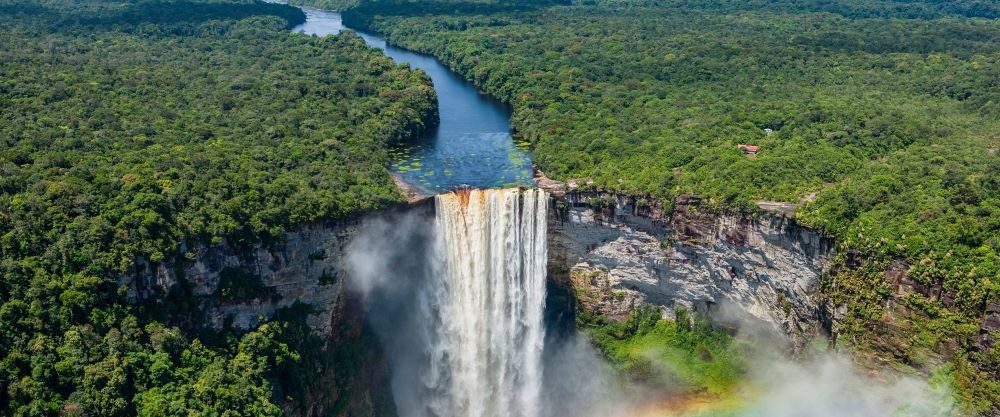For many low-income countries, nature is a path out of poverty. Nature-based sectors – including forestry, fisheries, and ecotourism – can create jobs, boost economies, and increase resilience, if sustainably managed. Yet nature and the associated renewable natural capital is in decline. The World Bank estimates that the global economy could lose $US 2.7 trillion by 2030 (compared to business as usual) if certain ecosystem services collapse (pollination, carbon sequestration and storage, fisheries and timber provision). In low-income countries, Gross Domestic Product (GDP) could decline 10% annually on average, with higher losses in countries particularly dependent on ecosystem services.
These challenges cannot be effectively addressed unless nature is centered in economic decision making. One effective approach is by assigning monetary values to nature’s direct and indirect contributions to economies and human wellbeing through what’s known as “natural capital accounting” and using such data to establish the economic case for protecting and restoring nature.
What is Natural Capital Accounting?
Natural Capital Accounting (NCA), which is part of broader wealth accounting, integrates natural resources, economic valuation and analysis, providing a better understanding of development progress and its impacts on society and environment than standard measures such as GDP. Natural capital accounts are a set of objective data showing how a country’s natural resources in terms of stocks and flows of natural capital contribute to the economy and how the economy affects this resource over time and space. They can provide detailed information and statistics for better management of the economy, like accounts for the sectoral inputs of water and energy, and outputs of pollution that are needed to model green growth scenarios. Land and water accounts can help countries interested in increasing hydropower capacity to assess the value of competing land uses and the optimal way to meet this goal.
Natural capital accounts help biodiversity-rich countries design strategies that boost economic growth while balancing ecotourism, agriculture, livelihoods, and ecosystem services like flood protection and groundwater recharge.
The concept of accounting for natural capital has been around for more than 30 years. A major step towards achieving this vision came with the adoption by the UN Statistical Commission of the System for Environmental and Economic Accounts (SEEA) in 2012. This provides an internationally-agreed method to account for material natural resources like minerals, timber and fisheries.
Like other forms of capital, natural capital requires investment, maintenance, and good management if it is to fully contribute to increasing output and prosperity. Natural capital accounting is a tool that can help measure the full extent of a country’s balance sheet of natural assets. When faced with critical decisions like whether to build a road through a forest or clear mangroves to build a port, countries need data on the value of the services provided by the forest and the mangroves that will potentially be lost in this process. These figures need to be comparable to the economic data related to infrastructure development. This enables more informed decision making that is rooted in understanding the trade-offs around natural resource management.
Until now, GDP has been the top indicator for tracking economic progress. Its widespread adoption is a testament to its utility in capturing key economic dimensions, particularly those related to the domestic production of market goods and services. However, using GDP is not without its limitations. It falls short in encompassing the full spectrum of productive activities, especially those dependent on nature, such as breathable air, clean water, nutritious food, weather regulation, and recreation. It also fails to account for the “hidden” costs associated with economic production in terms of human health, resource degradation, and environmental pollution.
Another aggregate economic metric is thus needed that can measure the sustainability of economic progress—a nation’s wealth. The minimum condition for economic development to be sustainable is that real wealth per capita does not decline over time. This is because as long as real wealth per capita does not decline, future generations will inherit at least the same production and consumption opportunities as the current generation. Wealth in this context encompasses the value of all the assets of a nation that support economic production, such as factories, intellectual property, and roads (produced capital); forests, fish stocks, and fossil fuel reserves (natural capital); the dimensions of the labor force (human capital); and net foreign assets. Real wealth per capita will increase if more workers enter the labor force or if the same workers upgrade their skills, if forests grow, or new commercially recoverable minerals are discovered. However, it will decline if fish stocks are overfished, machinery degrades, or the reserves of fossil fuels are depleted or become commercially unexploitable.
When different assets are complements and substitutability is limited, a better condition for tracking sustainability is non-declining real renewable natural capital per capita. This recognizes the limits in terms of substituting the essential services that nature provides to all life on the planet. The latest edition of the Changing Wealth of Nations for the first time examines these two assumptions for measuring sustainability.
Linking NCA with Policy
Natural Capital Accounting (NCA) provides the basis for embedding nature and its contributions adequately into policy and decision making in developing countries. When NCA data is available, broader economic and policy analysis that includes the values of nature enables countries to integrate development and sustainability considerations into decision making. For example, this allows countries to better understand who benefits and who bears the cost of ecosystem changes and what actions can be taken to improve outcomes for affected people and ecosystems. It provides the foundations for developing approaches that target the poorest communities and the resources that matter most to them. Similarly, it allows financial markets and investors to build nature related risks and opportunities into their core business strategies and investment decisions.
Last Updated: Apr 21, 2025


